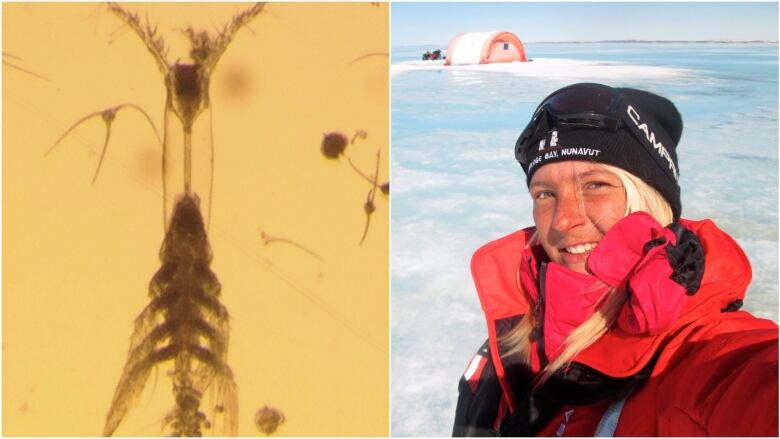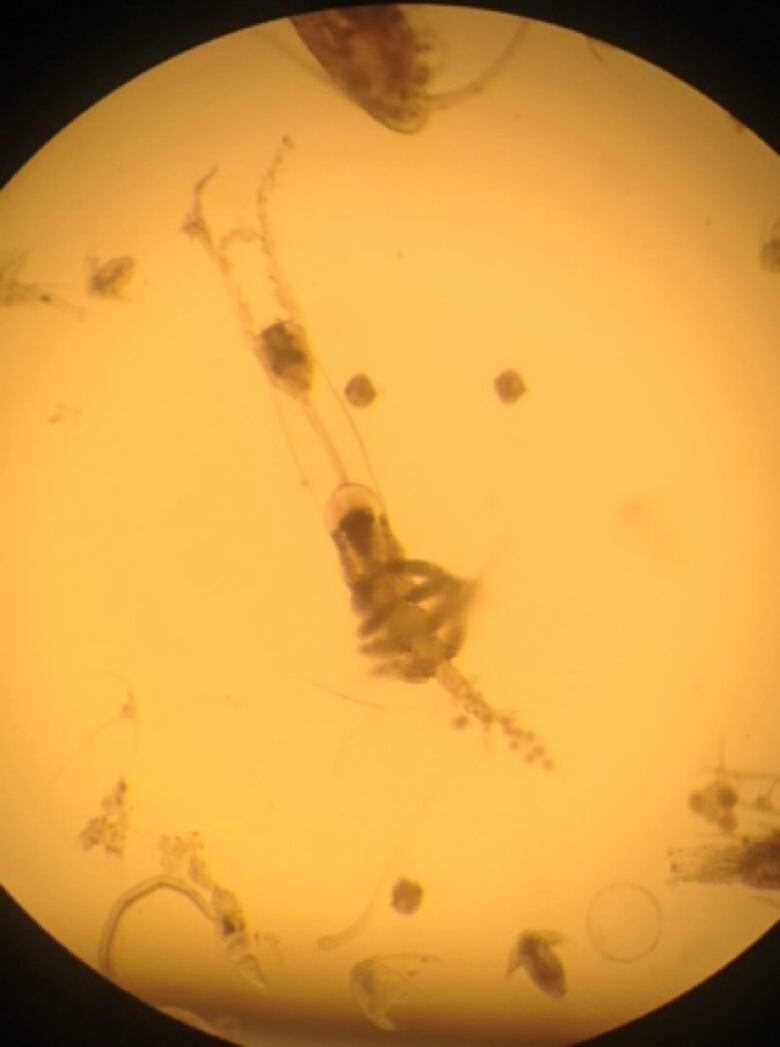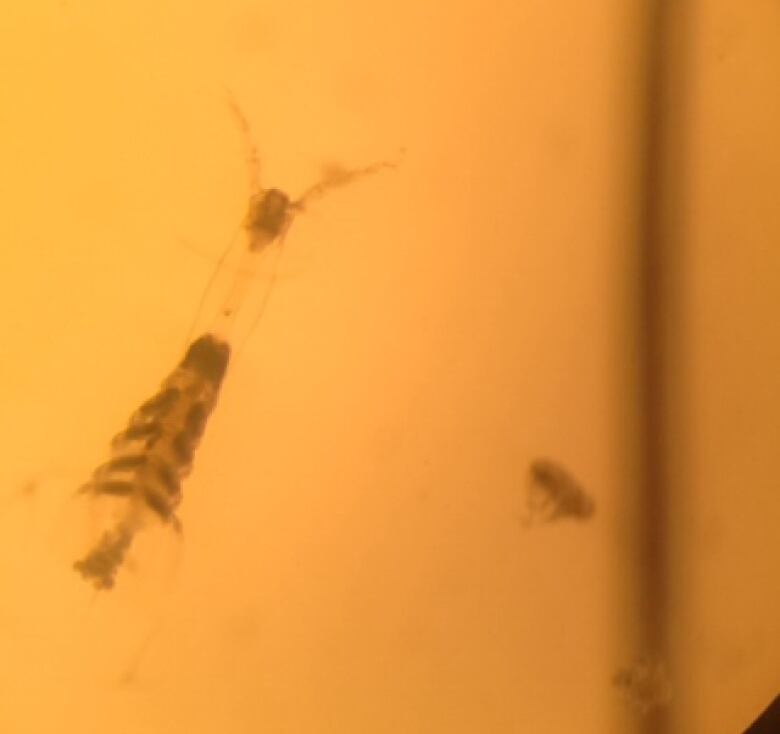A 'monster' discovery: Tiny translucent crustacean a 1st in Canada's Arctic
Manitoba researcher accidentally finds tiny Monstrillopsis creature off shores of Cambridge Bay, Nunavut

It's a phantomthat'shaunted the subsurface waters of the frozen Arctic for untold millennia in secret until now.
University of Manitoba researcherAurelie Delaforgeaccidentally discovered a new form of Monstrillopsis zooplankton in the cold aquatic environment of Cambridge Bay, Nunavut, in 2014. The findings were published in the journal ZooKeys on Thursday.
"Everybody in their job has somethingthat they want to achieve, and for a taxonomist, discovering a new species is pretty special," Delaforgetold CBC News.
"You kind of want to be like, 'Oh my god, when they're going to speak about that they're going to mention my name, because I discovered it.'"
The tiny translucent crustacean measures in at just twomillimetres long. It has eight bristly legs, one eye, no mouthand is the firstspecies from theMonstrillopsisfamily to be discovered in the Canadian Arctic one of about 160 species around theworld.
Happy accident
What makes the finding even more interesting is that it might not have happened at all.

As part of her PhDwork, Delaforge was living in a tent camp on the Arctic ice, studying what causes algal blooms to form beneath the frozen ocean.
Algae and other phytoplanktonsmall aquatic plants are vitally important to aquatic communities, because they form the base of the food web in the ocean.Algae can be themain food source for small invertebrates and filter feeders,which in turn end up on the dinner plates of small minnows that ultimately get gobbled up by big fishes and marine mammals.
The principle across many ecology fields is that if something human activity, climate change alters the delicate balance of local predator-prey relationships, there's a risk it could trigger a domino effect and cause species populations to collapse.
It's those concerns that drew Delaforge north to tryto understand how a warming climate and thinning sea ice could lead to changes forlocal algae communities.
She incidentally scooped up some of the previously undiscovered little monsters one day while samplingthose tiny aquatic plants and algae.
It happenedagain and again when Delaforge would dip her nets into the frigid water, completely unbeknownst to her until she returned to the lab in Winnipeg and saw the wrigglythings,suspended inpetridish preservatives, through a microscope.
"I didn't see the monsters until I got back," she said. "I didn't know what it was.I was like, 'This is such a weird thing.'"
'I could've missed it'
She sent her samples to a Monstrillopsisspecialist based in Mexico, who dissected them and confirmed her suspicions: this was a first for Canada's Arctic. The critter was from theMonstrilloida group, which derives its name from the word "monster."
"So it was a new speciesand that day, I must say, I had a big smile on my face all day long. When you do taxonomy, that's pretty much as good as it can get, because you don't discover a new species every day," she said."I could've missed it."
Delaforgepreviously studied phytoplanktonand zooplankton (small aquatic animals)and the way environmental changes impact those communities during her master's research in France. It's that past experiencethat helped her identify the peculiar-looking speck of a creature during her Arctic research at the U of M.
The finding was even more unlikely when you consider thatMonstrillopsistakes shape as an adultfor only two months, and the organisms are either busy infecting Arctic clams and sponges, or nearly invisible as larvae.
"You're looking at something but then you're discovering something else," she said."I guess that's why this scientific work is so important, and you have to look at everything and not just focus on one little thing."

More from CBC Manitoba:












_(720p).jpg)


 OFFICIAL HD MUSIC VIDEO.jpg)
.jpg)



























































































